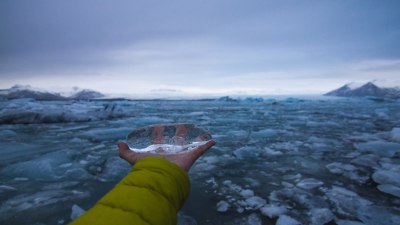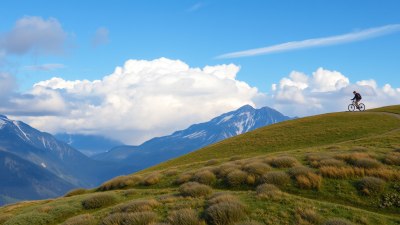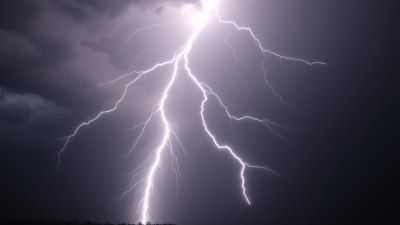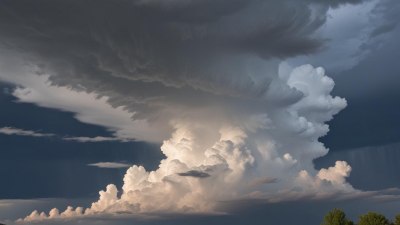How Melting Permafrost Releases Gases That Affect Weather
Explore the connection between melting permafrost and its impact on global weather patterns.

Permafrost, a layer of permanently frozen soil found in polar regions, has been a critical component of the Earth's ecosystem. It contains large amounts of organic carbon that, when released, can significantly impact our atmosphere and weather patterns. As global temperatures rise, permafrost begins to thaw, releasing gases such as carbon dioxide (CO2) and methane (CH4) into the atmosphere. These gases contribute to the greenhouse effect, exacerbating climate change and altering weather conditions worldwide.
Understanding the process of permafrost thawing and its subsequent release of gases is vital for comprehending future climate scenarios. The melting of permafrost occurs when temperatures exceed 0°C for extended periods, causing ice within the soil to melt. This transition not only releases trapped gases but also allows for enhanced microbial activity, leading to further decomposition of organic materials and additional gas emissions.
The Composition of Permafrost
Permafrost consists of a mixture of soil, ice, and organic matter that has remained frozen for two or more consecutive years. A significant fraction of this organic matter includes remnants of plants and animals that have been preserved in cold conditions over millennia. As the permafrost thaws, these organic materials decompose, leading to the production of greenhouse gases. Carbon dioxide is produced through aerobic respiration when microbes break down the organic elements in the presence of oxygen. In contrast, methane is generated through anaerobic processes where bacteria decompose organic material in the absence of oxygen.
The Role of Greenhouse Gases
Greenhouse gases play an essential role in regulating the Earth's temperature. When these gases accumulate in the atmosphere, they trap heat, contributing to global warming. Among the gases released from melting permafrost, methane is particularly concerning due to its potency. Methane is approximately 28 times more effective than CO2 at trapping heat over a 100-year period. Even though it has a relatively short atmospheric lifetime compared to CO2, its immediate impact on warming is considerable.
Feedback Loops and Climate Change
The release of greenhouse gases from permafrost creates a feedback loop that accelerates climate change. As temperatures rise, more permafrost thaws, resulting in increased emissions of CO2 and methane. This further amplifies the warming effect, causing even more permafrost to melt—a cycle that threatens to spiral out of control. The Arctic is experiencing rapid temperature increases, with some areas warming at more than twice the global average. This drastic change not only endangers polar ecosystems but also has far-reaching implications for global weather patterns.
The Impact on Weather Patterns
The gases released from thawing permafrost have significant effects on weather systems worldwide. Increased concentrations of greenhouse gases contribute to changes in precipitation patterns, intensified storm systems, and altered temperature regimes. For instance, warmer air can hold more moisture, potentially leading to heavier rain events and increased flooding. Conversely, some regions may experience prolonged dry spells, exacerbating drought conditions. These shifts can disrupt agricultural practices, water supplies, and overall ecosystem stability.
Regional and Global Consequences
The impact of melting permafrost is particularly evident in Arctic regions, where indigenous communities and wildlife depend on stable climates for their survival. Changes in temperature and precipitation can influence migration patterns of animals, alter food sources, and impact traditional ways of life for indigenous peoples. Additionally, the thawing of permafrost can destabilize the ground, leading to infrastructure damage, erosion, and increased landslide risks in areas where human settlements are present.
Mitigation Strategies
Addressing the issue of permafrost thaw and its associated gas emissions requires a multifaceted approach. Reducing greenhouse gas emissions globally is crucial for mitigating climate change and slowing thawing rates. Strategies such as transitioning to renewable energy sources, improving energy efficiency, and implementing sustainable land use practices can significantly contribute to this goal. Additionally, enhancing our understanding of permafrost dynamics through research and monitoring is vital for predicting future changes and developing adaptation strategies.
The interplay between melting permafrost and the release of greenhouse gases underscores a critical aspect of climate change. As scientists continue to study this phenomenon, it becomes increasingly clear that the consequences of permafrost thaw extend beyond the Arctic, affecting global weather systems and climates. The urgency of addressing climate change cannot be overstated, as the cascading effects of permafrost thaw pose significant risks to ecosystems, human health, and economies. By prioritizing sustainability and investing in research, we can aim to control and mitigate these challenges while fostering a healthy planet for future generations.











